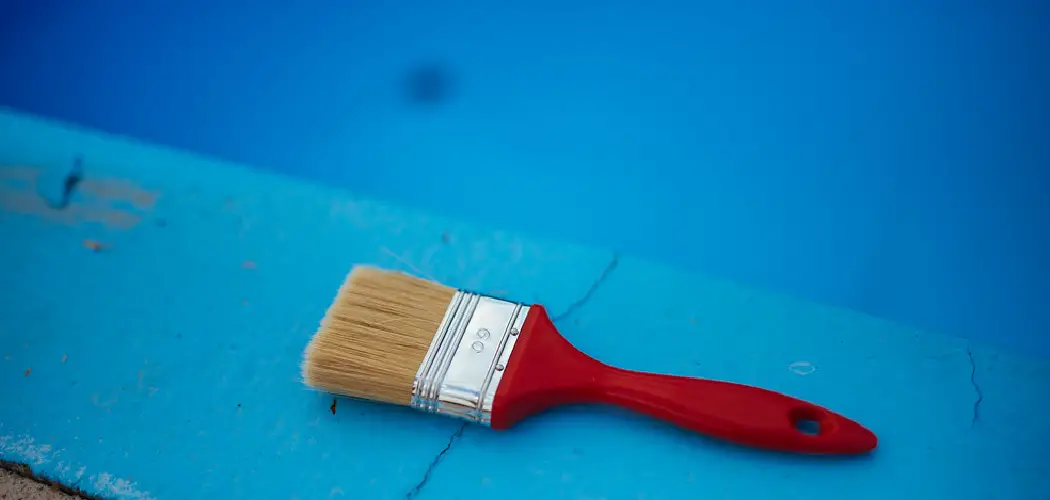Epoxy pool paint is the secret to achieving a stunning and long-lasting finish for your swimming pool. Whether you’re looking to refresh the appearance of your pool or provide a protective coating that can withstand the rigors of constant exposure to water and chemicals, knowing how to apply epoxy pool paint is essential.
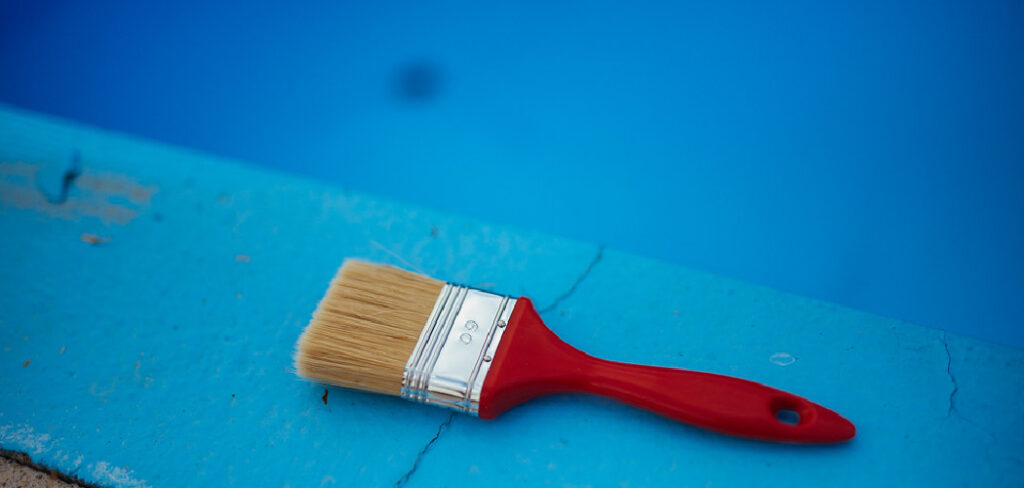
In this article, we will take you through the step-by-step process of applying epoxy pool paint, from surface preparation to the final brushstroke.
We’ll discuss the benefits of epoxy coatings, such as their durability, resistance to UV rays, and ease of maintenance, while also highlighting the importance of proper application techniques to ensure a smooth and flawless finish. So, whether you’re a pool owner looking to embark on a DIY project or a professional seeking to enhance your pool maintenance skills, read on to learn how to transform your pool into a pristine oasis with epoxy pool paint.
Importance of Proper Pool Maintenance and Painting
Swimming pools are a great addition to any backyard and provide endless hours of fun for families and friends. However, owning a pool also comes with the responsibility of proper maintenance in order to keep it safe and enjoyable for everyone. One important aspect of pool maintenance is applying epoxy pool paint.
- Preparation: Before applying any paint, ensure that the surface is clean and free of any debris, oils, or other contaminants. This can be achieved by scrubbing the surface with a pool cleaner or solution and rinsing thoroughly.
- Repair any damaged areas: If there are any cracks, chips, or rough spots on the pool’s surface, it is important to repair them before painting. Otherwise, the paint may not adhere properly and result in a patchy finish.
- Choose the right paint: There are various types of epoxy pool paints available, including solvent-based and water-based options. Be sure to choose the type that is suitable for your pool’s surface and follow the manufacturer’s instructions for mixing and application.
- Use proper equipment: To ensure a smooth and even application, it is important to use the right tools such as rollers, brushes, and paint trays. These can be purchased at any hardware store or online.
- Follow safety precautions: Epoxy pool paint contains strong chemicals that can be harmful if inhaled or ingested. Be sure to wear protective gear such as gloves, goggles, and a mask when handling the paint. Also, make sure the area is well-ventilated during and after application.
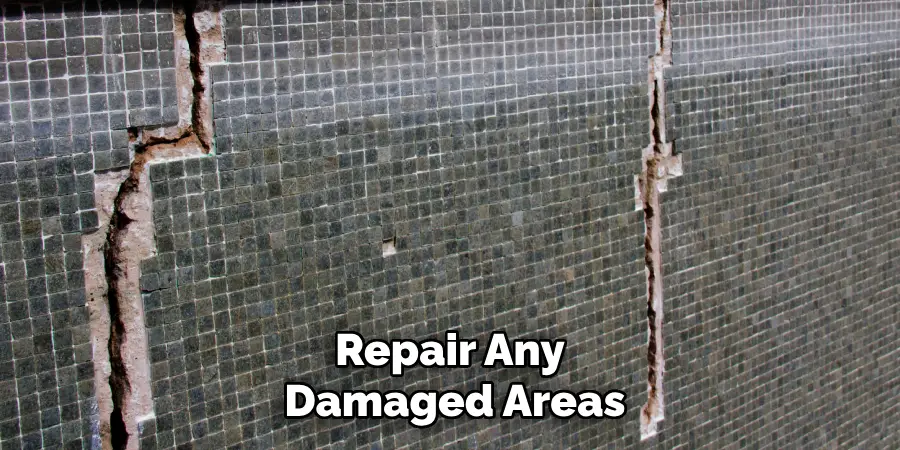
10 Methods How to Apply Epoxy Pool Paint
1. Prepare the Pool Surface
Before applying epoxy pool paint, it is important to prepare the surface of the pool. This includes cleaning and removing any debris, dirt, or other contaminants that may be present on the surface. Additionally, any cracks or holes should be filled in with a patching compound before painting. Once the surface is clean and prepped, it is time to begin painting.
2. Mix the Paint
Once the pool surface is prepared, it is time to mix the paint. Epoxy pool paint typically comes in two parts: a base coat and a top coat. It is important to mix these components together thoroughly before applying them to the pool surface.
A power drill with a mixing attachment can help to ensure that all of the components are evenly mixed together for optimal results.
3. Apply Primer
Once the paint has been mixed, it is time to apply a primer coat to the pool surface. The primer will help to create an even surface for painting and will also help protect against corrosion and water damage over time. Make sure that you allow enough time for the primer to dry completely before moving on to step four.
4. Apply Base Coat
The next step in applying epoxy pool paint is to apply a base coat of paint onto the primed surface of your pool. This layer should be applied evenly using either a roller or brush, depending on your preference and skill level. Make sure you give each section of your pool enough time to dry completely before moving on to step five.
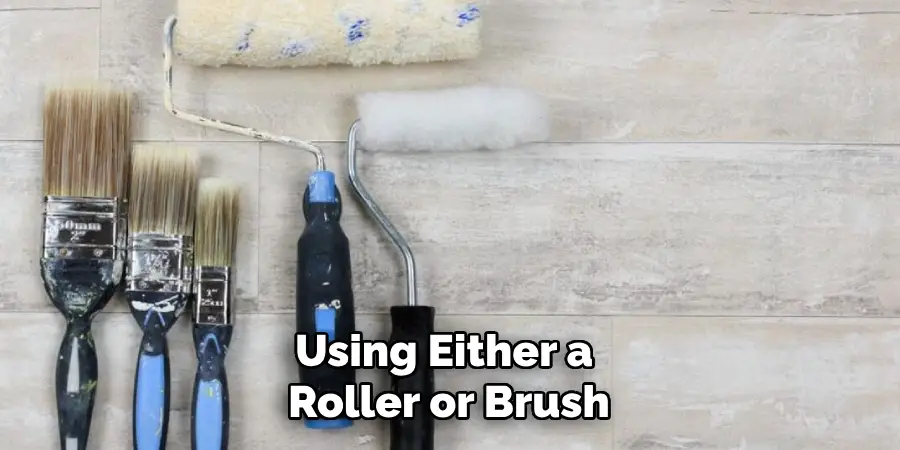
5. Apply Top Coat
Once your base coat has been applied and allowed sufficient time to dry, it is time for you to apply a top coat of epoxy pool paint onto your primed and painted surfaces. Again, this layer should be applied evenly using either a roller or brush, depending on your preference and skill level. Allow this layer sufficient time for drying before moving on to step six.
6. Sand Between Coats
After both coats of epoxy have been applied and allowed sufficient drying time, it is important that you sand between coats in order to achieve an even finish when all layers are complete. Use either fine-grit sandpaper or steel wool depending on your preference and skill level, making sure that all areas are sufficiently sanded down until smooth before proceeding with step seven.
7. Clean Pool Surface
Once all layers have been applied and sanded down, it’s now important that you clean off any dust from sanding. This can be done by simply wiping down each area with a damp cloth. Be sure not to leave any residue behind, as this could affect how well your epoxy coating adheres.
8. Check Weather Conditions
Before beginning the application, make sure you check weather conditions such as temperature, humidity, wind speed, etc. All of these factors could affect how well your epoxy coating cures, so make sure they are within acceptable ranges prior to application.
9. Apply Final Coating
Now comes one of the most important steps – applying the final coating! Make sure you follow the instructions provided by the manufacturer regarding how many coats should be applied, what type of applicator should be used, etc. Doing so will ensure the best possible outcome when finished!
10. Allow Adequate Curing Time
Finally, after the final coating has been applied, make sure you give adequate curing time specified by the manufacturer. Depending on conditions such as temperature, humidity, etc, curing times can vary greatly, so make sure you follow directions closely!
Things to Consider When Applying Epoxy Pool Paint
Epoxy pool paint is a great option for protecting your swimming pool and extending its lifespan. This type of paint can also give your pool a beautiful and glossy finish, making it look brand new again. However, applying epoxy pool paint requires some careful consideration to ensure the best results.
Here are some things to keep in mind when applying epoxy pool paint:
Surface Preparation
One of the most important steps in painting your pool with epoxy is preparing the surface. This includes thoroughly cleaning any algae, dirt, or debris off the walls and floor of the pool. It’s also essential to degrease the surface and remove any existing paint or coatings before applying epoxy.
Weather Conditions
The weather can greatly affect the outcome of your pool painting project. You should avoid painting in direct sunlight or on a windy day, as this can cause the paint to dry too quickly and result in an uneven finish. It’s best to choose a calm and cloudy day with temperatures between 50-90 degrees Fahrenheit for optimal results.

Proper Mixing
Epoxy pool paint is a two-part system that requires precise mixing to activate its bonding properties. Follow the manufacturer’s instructions carefully and make sure to use the correct ratio of resin and hardener. Improper mixing can result in a weak bond, causing the paint to peel or flake off over time.
Common Mistakes to Avoid When Applying Epoxy Pool Paint
Epoxy pool paint is a popular choice among pool owners due to its durability and ability to provide a smooth, glossy finish. However, the application process of epoxy paint requires careful attention to detail in order to achieve the desired results.
In this section, we will discuss some common mistakes that pool owners make when applying epoxy pool paint and how to avoid them.
Not Preparing the Surface Properly
One of the biggest mistakes pool owners make when applying epoxy paint is not preparing the surface properly. This can lead to poor adhesion, resulting in peeling or chipping of the paint over time.
It is essential to thoroughly clean and degrease the pool surface before painting. Any dirt, debris, or oils on the surface can prevent the paint from adhering properly.
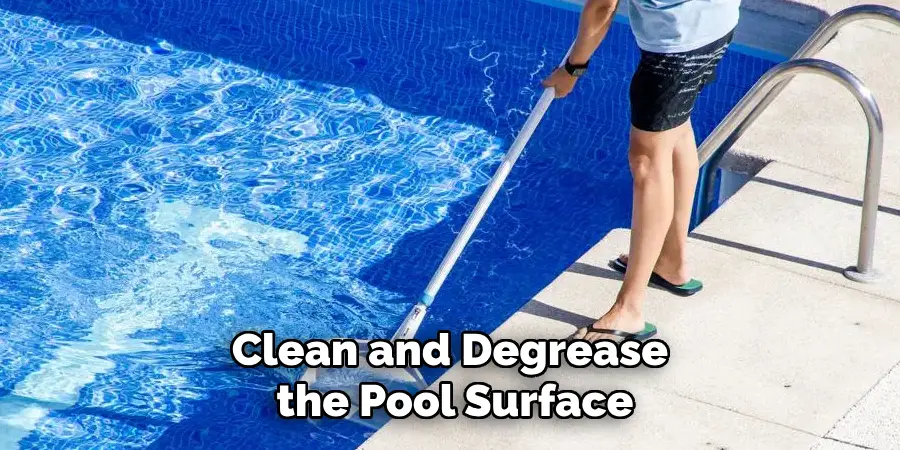
Skipping the Primer
Many pool owners skip the primer step when applying epoxy paint, thinking that it is unnecessary. However, primer serves an essential purpose in ensuring proper adhesion of the paint to the surface. It creates a smooth and even base for the paint to adhere to, resulting in a more durable finish.
Not Following the Recommended Mixing Ratio
Epoxy pool paint is a two-part system that requires thorough mixing of both components in the correct ratio in order to cure properly. Many pool owners make the mistake of not measuring the components accurately, leading to an uneven or blotchy finish.
It is crucial to follow the manufacturer’s recommended mixing ratio and use a clean measuring container.
Conclusion
In conclusion, epoxy pool paint is a great way to improve the look of your pool. With proper care and dedication, you can take pride in the knowledge that you have done it yourself. Not only will your pool look better and be able to withstand more wear and tear, but the time investment is absolutely worth it.
By preparing the pool’s surface ahead of time, mixing the paint, and carefully applying one coat of paint at a time, you can build up a beautiful layer that offers protection and great looks for years to come. Whether you decide to hire a professional or do it yourself, if you follow these simple steps, you now know the basics on how to apply epoxy pool paint. Don’t wait any longer — get ready to enhance your swimming experience this season!
About
Outdoor Fixes is a distinguished figure in the world of Diy design, with a decade of expertise creating innovative and sustainable Diy solutions.
His professional focus lies in merging traditional craftsmanship with modern manufacturing techniques,
fostering designs that are both practical and environmentally conscious. As the author of diy,
outdoorfixes delves into the art and science of outdoorfixes-making, inspiring artisans and industry professionals alike.
Education RMIT University
(Melbourne, Australia) Associate Degree in Design (Outdoor Fixes) Focus on sustainable design, industry-driven projects,
and practical craftsmanship. Gained hands-on experience with traditional and digital manufacturing tools, such as CAD and CNC software.
Nottingham Trent University
(United Kingdom) Bachelor’s in outdoorfixes.com and Product Design (Honors) Specialized in product design with a focus on blending creativity with production
techniques. Participated in industry projects, working with companies like John Lewis and Vitsoe to gain real-world insights.
Publications and Impact
In diy, Outdoor Fixes his insights on indoor design processes, materials, and strategies for efficient production.
His writing bridges the gap between artisan knowledge and modern industry needs, making it a must-read for both budding designers and seasoned professionals.

